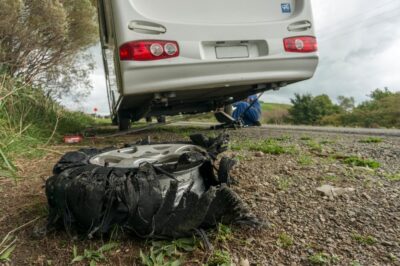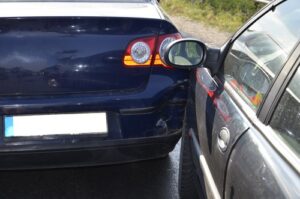
Driving your newly rented or purchased RV can seem intimidating at first. However, once you have cruised a few thousand miles, it may start feeling like a sports car. Okay, that may be a bit overstated, but it might at least feel like a large SUV.
The first time you get behind the wheel of an RV requires close attention and extra care. You should take it easy and practice on empty stretches of road or a vacant parking lot. It is okay to feel nervous.
Try not to let your nerves interfere with proper judgment or the ability to focus. You should be aware of the potential dangers and accidents that can happen in an RV. This is why we bring you the RV accident guide for novice drivers.
The Types of RVs
As a novice driver, you should be aware of the different class sizes of RVs. Because the Georgia General Assembly does not classify an RV as a commercial vehicle, you do not need a special license to tow a camper or operate a 40-foot luxury RV.
Depending on their capacities, lengths, and features, Georgia RVs can fall into three classes:
Class A
Class A RVs are generally luxury motorhomes with panoramic front windows, a solid body, bathroom facilities, and berths that convert from dinettes or living rooms. Class A RVs can include converted school or commercial passenger busses and are the largest mobile homes. They usually weigh 13,000 to 33,000 pounds.
Class B
Class B RVs include campervans. These conventional vans have raised roofs (pop-up or fixed), have small kitchens with refrigerators, and may contain an internal shower. They can weigh 6,000 to 8,000 pounds.
Class C
Class C RVs are characterized by a distinctive sleeping area that fits over the truck cab, and often weigh 10,000 to 12,000 pounds.
Other RV Types
Additionally, other types of RVs or motorhomes can include:
- Caravans — Also called travel trailers, these are light-weight, non-collapsible trailers with simple amenities that can be towed behind a motor vehicle.
- Truck campers — These are smaller RVs similar to Class C vehicles and are carried in pick-up truck beds.
- Pop-up campers — Pop-ups are collapsible campers with pull-out tent walls and berths, hauled behind a vehicle.
Get the strong arm
Car and RV Differences
The first thing you notice when you tow or sit behind the wheel of an RV is the size. Your vehicle takes up a lot more room on the road than your car or SUV. They are built longer and wider than cars to provide enough space for the living quarters. As a novice driver, you should be aware of the higher risk of losing control over your vehicle.
- The average RV, Class A motorhome is 33 feet but may come in models as long as 45 feet (nearly three car lengths). As mentioned above, Class A motorhomes weigh 33,000 pounds; however, some RVs can weigh approximately 40,000 pounds.
- RVs are much more substantial than the average car, which weighs about 4,000 pounds and is about 15 feet long.
Therefore, extra caution is needed when operating an RV in traffic. An accident could cause damage to your RV. Much worse, it can take the lives of drivers around you.
Before Operating Your RV
Before putting your RV in gear, make sure you know the height of your vehicle. If you do not have this information, you endanger your safety and the safety of those around you. Height may not mean much when you are driving your car. Driving an RV is a different matter.
Most RVs range from 10 to 14 feet tall. You should make a note of your RV’s exact height and tape it to your dashboard. Most interstate overpasses are 16 feet, giving you plenty of clearance. Though if you want to swing through a drive-thru bank or fast-food restaurant, be aware that you may be facing clearances of 10 feet or so.
Check your mirrors and find your blind spots. An RV’s blind spots are vaster than in your car. It is vital to check your mirrors often to spot smaller cars or trucks that might be cruising in your blind spot.
Lastly, get comfortable in your pilot’s chair. Adjust the seat position so you can reach and adjust the RV controls comfortably. Your RV’s seat is more adjustable than your regular car, so make sure you know what everything does before you start driving.
Navigating Your RV
Driving and maneuvering your RV requires more space than you need when you drive your car, pick-up, or van. For instance, taking a right turn in an RV requires much more room. You must pull your vehicle further out into the intersection before swinging it back around the corner. If you fail to pull it out far enough, you could hit the curb, another car, or another person.
Frequent Causes of RV Accidents
RV accidents are caused by numerous factors. Knowing the most frequent causes of RV accidents can safeguard you and those on the road with you. These include:
- Unprepared novice drivers
- Not taking note of your vehicle’s more significant blind spots
- Poorly balanced loads
- Misjudging turns or the greater distance it takes to stop an RV
- Speeding
- Driving for too many hours (pull over when you feel tired)
- RVs weighed down with too much gear
- Tire blowout (be sure to check your tire pressure before driving)
- Unsecured bags or other gear falling off your vehicle and into the roadway
Call John Foy & Associates
Take extra precautions when operating an RV for the first time. If you find yourself involved in recreational vehicle collision caused by someone else, contact an RV accident lawyer at John Foy & Associates. We have been helping victims of driver’s negligence earn compensation for their injuries for more than two decades.
For a free consultation, contact us online.
(404) 400-4000 or complete a Free Case Evaluation form




